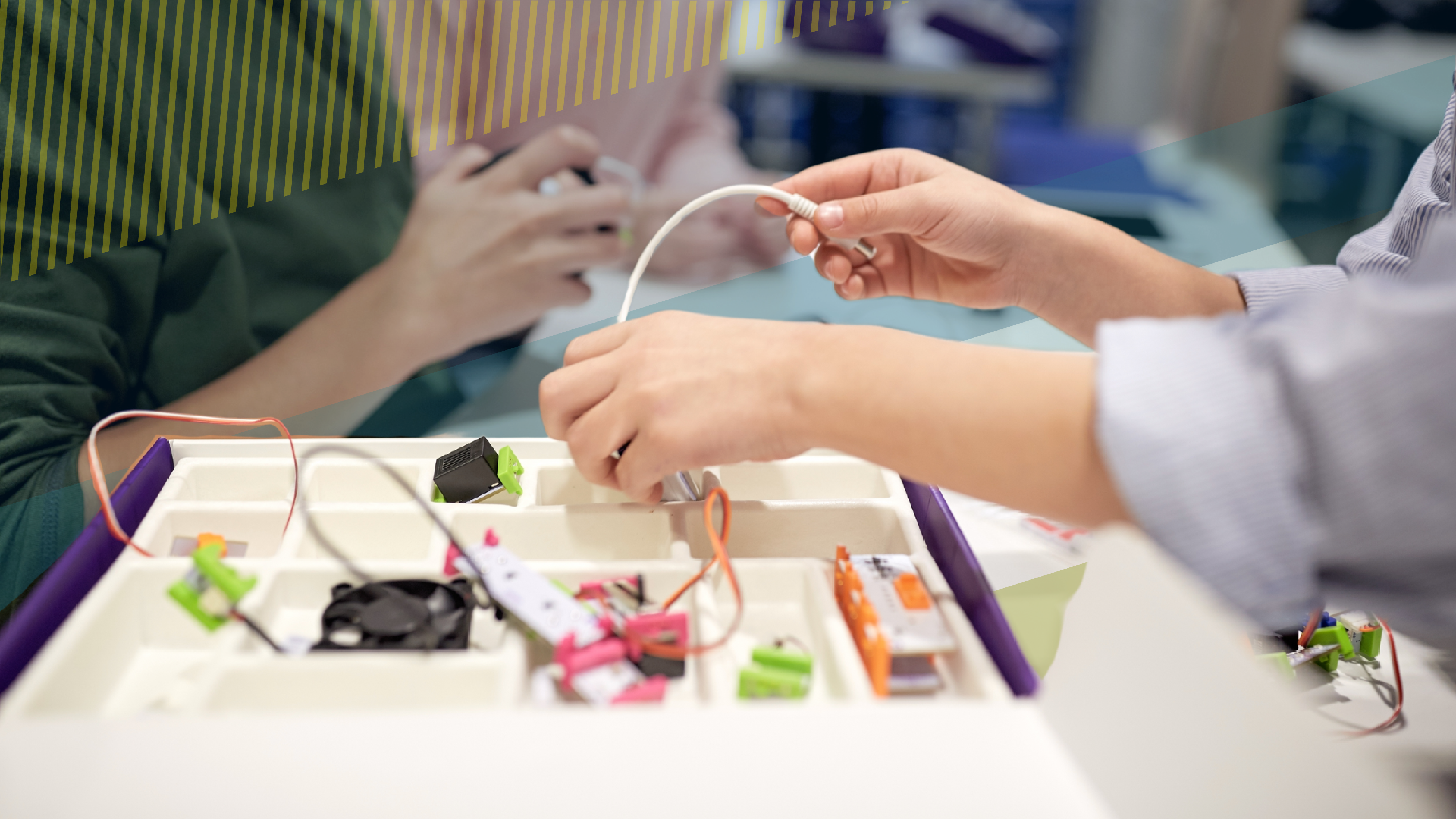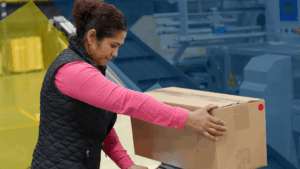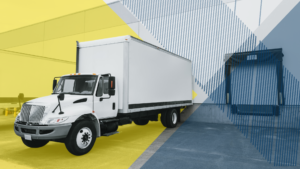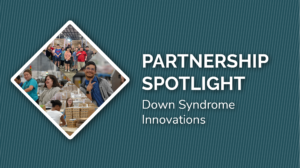Table of Contents
The world of electronics manufacturing requires efficiency and precision, as companies strive to meet growing consumer demands and tight deadlines. Managing the complexities of kitting—assembling individual electrical components into ready-to-use kits—is a daunting task that often requires outside help. From ensuring the availability of thousands of tiny parts to maintaining accuracy and quality, the challenges of kitting electronics often strain internal resources and slow down production. This is where Third-Party Logistics (3PL) providers step in, offering specialized expertise and solutions to streamline the kitting process.
3PLs bring a wealth of advantages to the table, from advanced inventory management systems to automated assembly processes that reduce errors and enhance speed. By outsourcing kitting to a trusted logistics partner, electronics companies can not only save time and costs but also focus on their core competencies—like innovation and product development. This blog delves into the specific ways 3PLs revolutionize kitting for electronics, helping businesses optimize operations, meet market demands, and maintain a competitive edge.
The Challenges of Kitting Electronics
Kitting in the electronics industry is a critical process, ensuring that individual components are grouped correctly for manufacturing or assembly. However, this task is far from simple, as it involves a series of challenges that require precision, coordination, and attention to detail. Let’s explore these challenges and their intricacies.
Managing Diverse Components with Varying Specifications
The diversity of components in electronics kitting introduces significant complexity. Each part has unique requirements, from its role in the final product to its storage and handling needs.
- Inventory Management: Maintaining an organized inventory system is crucial when dealing with a wide range of components, such as resistors, capacitors, and microchips. Mismanagement can lead to delays in locating or replenishing parts.
- Storage Requirements: Some components, like semiconductors, need controlled environments such as anti-static storage or specific temperature settings. Meeting these requirements consistently is vital to preserving the quality of parts.
- Supplier Coordination: Ensuring that all required parts are delivered on time and match specifications necessitates ongoing communication and coordination with multiple suppliers.
Ensuring Accuracy to Avoid Mismatched or Missing Parts
Accuracy is paramount in kitting electronics, as even the smallest error can result in costly delays or unusable products.
- Human Error in Manual Processes: Manual kitting processes are prone to errors like mislabeling, incorrect quantities, or mixing up similar components. These mistakes can ripple through production, causing significant inefficiencies.
- Verification Mechanisms: Implementing rigorous quality checks and verification systems is essential to ensure that each kit contains the correct components in the right quantities.
- Consistency in High-Volume Orders: Accuracy becomes even more challenging when assembling large volumes of kits under tight deadlines, making it crucial to have standardized procedures in place.
Meeting Tight Deadlines in Fast-Paced Markets
In the highly competitive electronics industry, time-to-market is a critical factor. Kitting operations must be fast and efficient to keep up with the pace of demand.
- Short Lead Times: Electronics companies often face compressed production schedules, leaving little room for delays in the kitting process.
- Team Coordination: Kitting requires seamless communication between procurement, production, and shipping teams. Delays or errors in one area can affect the entire supply chain.
- Scalability During Demand Spikes: Seasonal surges or sudden increases in orders demand scalable solutions to maintain efficiency without compromising quality.
Handling Quality Control and Packaging Standards for Fragile Electronic Parts
Electronics components are often delicate and require careful handling to ensure they remain functional and undamaged.
- Delicate Components: Parts like circuit boards, sensors, and connectors are easily damaged if not handled properly. Specialized techniques and tools are often necessary to prevent breakage.
- Packaging Standards: Adhering to industry standards, such as anti-static packaging and shock-proof materials, ensures that components remain protected during storage and transportation.
- Preventing Returns and Replacements: Quality control measures help minimize the risk of shipping defective or damaged kits, which can lead to costly returns and harm customer trust.
Integrated Micro-Electronics, Inc. (IMI), a global electronics manufacturing services (EMS) provider, exemplifies the complexities involved in kitting processes for advanced electronic products. Specializing in automotive electronics, industrial applications, and more, IMI manages a vast array of components with varying specifications to produce items like automotive cameras, power modules, and medical diagnostic devices.
To handle the diversity of components, IMI employs sophisticated inventory management systems that ensure each part is accurately tracked and stored under appropriate conditions, such as anti-static environments or temperature-controlled settings. This meticulous management is crucial to prevent delays and maintain production schedules. Additionally, IMI adheres to stringent quality control measures, including automated testing and inspection, to verify that each kit meets the required standards before assembly. Operating in the fast-paced electronics market, IMI is accustomed to tight deadlines and utilizes advanced manufacturing engineering and test systems development to streamline processes and meet customer demands efficiently.
IMI’s comprehensive approach to managing complex kitting processes highlights the importance of precision, quality control, and efficient time management in the electronics manufacturing industry.
How 3PLs Streamline Kitting Processes
Third-Party Logistics (3PL) providers play a pivotal role in optimizing the kitting process for electronics companies. By leveraging advanced systems, automation, and specialized expertise, they help businesses overcome challenges and achieve efficiency, accuracy, and cost savings. Let’s explore how 3PLs streamline kitting through various strategies.
3PLs Facilitate Better Inventory Management To Streamline Electronics Kitting
Effective inventory management is the foundation of successful kitting. 3PLs use cutting-edge systems and processes to handle the complexities of diverse electronics components by utilizing advanced systems to track and organize components and ensuring availability and replenishment of stock to prevent delays.
Advanced Inventory Tracking Systems: 3PLs utilize sophisticated inventory management software to maintain real-time visibility of stock. These systems allow them to:
- Track the exact location and quantity of components within a warehouse.
- Monitor stock levels in real time to prevent shortages or overstocking.
- Integrate with manufacturers’ and suppliers’ systems for seamless data sharing and better demand forecasting.
Component Organization and Categorization: Electrical components often vary widely in size, specification, and storage requirements. 3PLs employ precise organizational methods to:
- Group components logically based on usage or assembly sequence.
- Assign barcodes or RFID tags to parts for quick identification and retrieval.
- Design storage layouts that minimize retrieval time and reduce handling errors.
Automated Replenishment Systems: To ensure constant availability of components, 3PLs use automated reorder triggers based on predefined stock thresholds. These systems:
- Predict when stock will run low and initiate restocking automatically.
- Minimize downtime caused by delays in sourcing critical components.
- Allow businesses to maintain lean inventories while avoiding stockouts.
Specialized Storage Solutions: Many electrical components, such as semiconductors or capacitors, require specific storage conditions. 3PLs:
- Provide climate-controlled environments for temperature-sensitive items.
- Use anti-static materials and storage solutions to protect delicate electronics from damage.
Inventory Optimization: 3PLs analyze inventory trends and usage patterns to improve efficiency and reduce waste. This includes:
- Identifying slow-moving or obsolete components and recommending adjustments to procurement.
- Consolidating inventory to reduce storage costs and improve accessibility.
Real-Time Reporting and Analytics: By offering detailed reports and analytics, 3PLs provide insights into inventory performance. This enables businesses to:
- Make informed decisions about procurement and kitting schedules.
- Identify inefficiencies or bottlenecks in the supply chain.
- Improve forecasting for future projects.
3PLs Add Value in Electronics Kitting Through Better Automation And Efficiency
Automation is key to improving the speed and accuracy of kitting processes. 3PLs integrate technology into their operations to handle repetitive tasks with precision, employing automation for sorting, assembling, and packaging, and reducing human error and speeding up the kitting process.
Automating Sorting, Assembly, and Packaging: 3PLs utilize advanced technology, including robotics and automated machinery, to perform critical tasks in the kitting process.
- Sorting Components: Automated systems quickly sort and organize diverse electronic components, ensuring that the right parts are routed to the correct kits. This eliminates the need for manual sorting, saving time and reducing errors.
- Assembly of Kits: Robotic arms and programmable machines assemble kits with speed and accuracy, even for complex configurations. This ensures uniformity across all kits, regardless of order volume.
- Packaging Solutions: Automated packaging equipment seals, labels, and prepares kits for shipping while adhering to protective packaging standards, such as anti-static measures for sensitive electronics.
Reducing Human Error: Automation minimizes reliance on manual processes, significantly reducing the risk of errors that can occur when handling similar-looking or fragile components.
- Precise Component Matching: Machines equipped with sensors and AI-powered software verify that each kit contains the correct components in the right quantities, preventing mismatches.
- Barcode Scanning and Verification: Automated barcode systems ensure that each component is accounted for and correctly assigned to its designated kit.
Enhancing Speed and Throughput: Automation accelerates the kitting process, enabling 3PLs to handle high volumes of orders within tight deadlines.
- Continuous Operation: Machines can operate around the clock, meeting demand spikes without compromising quality.
- High-Speed Assembly Lines: Automated assembly lines process kits much faster than manual operations, reducing lead times and enabling faster delivery to customers.
Optimizing Resource Utilization: Automation allows 3PLs to optimize their workforce and physical space.
- Freeing Up Labor: By automating repetitive tasks, skilled workers can focus on quality assurance, problem-solving, and managing specialized projects.
- Maximizing Facility Efficiency: Automated equipment reduces the physical footprint required for kitting operations, allowing 3PLs to store and process more inventory in the same space.
Integrating Data and Analytics: Automated systems collect valuable data throughout the kitting process, enabling continuous improvement and efficiency gains.
- Real-Time Tracking: Businesses can monitor the status of kitting operations in real time, providing transparency and control over the supply chain.
- Performance Insights: Analytics help identify bottlenecks, inefficiencies, and areas for improvement, allowing 3PLs to fine-tune their processes further.
3PLs Bring Cost-Effectiveness Strategies To Electronics Kitting
3PLs bring cost savings by consolidating operations and leveraging their specialized capabilities.They do this by consolidating operations to reduce storage, labor, and transportation costs, and by leveraging economies of scale through specialized services.
Consolidating Operations: 3PLs centralize kitting, storage, and distribution under one roof, streamlining the entire process.
- Reduced Transportation Costs: Consolidating operations minimizes the need to move components between multiple locations, reducing shipping expenses and time delays.
- Lower Overhead: By housing inventory, assembly, and packaging in a single facility, 3PLs eliminate the costs associated with managing separate spaces, such as additional rent, utilities, and security.
Leveraging Economies of Scale: 3PLs handle large volumes of kitting operations for multiple clients, allowing them to spread costs across a broader base.
- Shared Resources: By using shared infrastructure, technology, and labor, 3PLs can provide high-quality services at a lower cost per unit.
- Bulk Purchasing Power: Their ability to buy materials, packaging supplies, and services in bulk often results in cost savings that are passed on to clients.
Optimizing Labor Costs: Through strategic workforce management, 3PLs reduce labor expenses without compromising quality.
- Automating Labor-Intensive Tasks: Automation reduces reliance on manual labor for repetitive tasks like sorting, assembly, and packaging, lowering payroll costs while boosting efficiency.
- Flexible Workforce Models: 3PLs employ flexible labor strategies, such as temporary staffing during peak seasons, to handle fluctuations in demand without incurring unnecessary costs during slower periods.
Streamlining Inventory Management: Effective inventory management minimizes waste and reduces costs associated with excess stock or shortages.
- Minimizing Overstock: Advanced tracking systems allow 3PLs to maintain optimal inventory levels, avoiding the expenses of overstocked items, including storage fees and depreciation.
- Reducing Stockouts: Automated replenishment and close supplier partnerships ensure that critical components are always available, avoiding costly production delays.
Enhancing Operational Efficiency: Efficient processes and technology enable 3PLs to maximize output while reducing costs.
- Process Standardization: 3PLs standardize kitting workflows, reducing waste, duplication, and inefficiencies. This consistency also speeds up production and reduces error rates.
- Technology Integration: The use of advanced software for planning, tracking, and reporting eliminates costly manual errors and streamlines operations.
Flexible and Scalable Solutions: 3PLs adapt to the specific needs of businesses, providing tailored solutions that minimize unnecessary expenses.
- Pay-as-You-Use Models: Businesses only pay for the kitting and logistics services they use, avoiding fixed costs for unused resources.
- Scalability for Seasonal Demands: 3PLs can quickly scale up or down to meet demand changes, reducing the costs associated with maintaining excess capacity during off-peak times.
3PLs Provide Scalability and Flexibility In Electronics Kitting Operations
In the fast-paced electronics market, flexibility and scalability are essential to meet changing demands. 3PLs help manufacturers adapt to fluctuating demands in the electronics market and offer them customized solutions for different product lines or business needs.
Adapting to Fluctuating Demands: 3PLs enable businesses to handle varying levels of demand without overextending resources or compromising efficiency.
- Handling Seasonal and Market Variations: Electronics markets often experience demand spikes during product launches, holiday seasons, or tech events. 3PLs scale their operations up or down to match these fluctuations, ensuring businesses can meet peak demand without the need for permanent infrastructure or staffing increases.
- Accommodating Sudden Changes in Volume: Whether due to a surge in customer orders or unforeseen delays in supply chains, 3PLs are equipped to respond quickly, ramping up production or adjusting workflows as needed.
Customizing Solutions for Unique Needs: 3PLs offer tailored services to meet the specific requirements of different electronics products and businesses.
- Flexible Kitting Configurations: With extensive experience and resources, 3PLs can accommodate unique kitting specifications, such as varying component sizes, assembly sequences, or packaging standards. This ensures that each kit aligns with the end product’s requirements.
- Supporting Diverse Product Lines: Electronics companies often manage multiple product lines with different components and assembly processes. 3PLs provide the flexibility to support these diverse needs under a single service provider.
Expanding and Contracting Resources: 3PLs eliminate the burden of maintaining fixed resources by offering dynamic scalability.
- On-Demand Workforce: To manage labor-intensive kitting during high-demand periods, 3PLs utilize temporary staffing solutions or deploy additional skilled workers. During slower periods, they adjust staffing levels to reduce costs.
- Scalable Infrastructure: 3PL facilities are designed to accommodate varying levels of inventory and kitting activity. Businesses can leverage these scalable resources without investing in their own additional warehouse space or equipment.
Enabling Rapid Market Entry: 3PLs allow businesses to respond to market opportunities faster by providing immediate access to logistics capabilities.
- Faster Product Launches: With scalable systems in place, 3PLs can handle sudden increases in kitting demands for new product rollouts, reducing the time to market.
- Expanding Geographic ReachL: 3PL networks often include strategically located facilities, enabling businesses to quickly expand their reach into new markets without setting up their own operations.
Supporting Long-Term Growth: 3PLs adapt as businesses evolve, providing consistent support throughout different growth stages.
- Seamless Scaling for Growing Businesses: As businesses expand their operations, 3PLs scale their resources to match increased production needs, allowing companies to focus on innovation and strategy rather than logistics.
- Flexibility for Changing Strategies: Whether pivoting to new product lines or adjusting to changing customer preferences, 3PLs offer the adaptability required to implement these changes efficiently.
How 3PLs Streamline Kitting Processes
Handling electronics components requires technical knowledge and strict adherence to industry standards, areas where 3PLs excel.They help by ensuring adherence to industry regulations and quality standards, and by providing skilled labor for handling delicate or complex electronics.
Ensuring Adherence to Industry Regulations and Quality Standards: The electronics industry operates under strict regulatory requirements and quality expectations, which 3PLs are well-equipped to handle.
- Regulatory Compliance: 3PLs stay updated on industry regulations, such as RoHS (Restriction of Hazardous Substances), WEEE (Waste Electrical and Electronic Equipment Directive), and country-specific trade laws. They ensure all kits meet these compliance standards, reducing the risk of fines or product recalls.
- Anti-Static and Safety Measures: Handling sensitive electronic components requires special precautions. 3PLs use anti-static materials, controlled environments, and proper handling techniques to protect components from damage.
- Standardized Processes: By following globally recognized standards, such as ISO certifications, 3PLs maintain consistent quality across all kitting operations, ensuring customer satisfaction and reducing errors.
Providing Skilled Labor for Delicate and Complex Electronics: Electronics kitting demands a high level of technical expertise to handle intricate and fragile components effectively.
- Training and Specialized Workforce: 3PLs employ skilled professionals trained in handling delicate electronic parts, ensuring they are assembled, packaged, and shipped with precision. This reduces the likelihood of damage or incorrect assembly.
- Technical Knowledge of Components: 3PL teams are knowledgeable about various electronic components, including semiconductors, circuit boards, and connectors, enabling them to identify and resolve issues quickly.
Delivering Quality Assurance: Quality control is critical in electronics kitting, and 3PLs provide rigorous checks at every stage of the process.
- Inspection and Testing Protocols: 3PLs implement thorough inspection procedures to verify the accuracy and quality of kits before they are shipped. This includes cross-checking components, ensuring proper assembly, and verifying packaging integrity.
- Defect Reduction: By employing advanced tools and expertise, 3PLs minimize errors, such as missing parts or incorrect configurations, ensuring kits meet exact specifications.
Streamlining Compliance Documentation: Meeting compliance requirements often involves extensive documentation, which 3PLs manage efficiently.
- Documentation Management: 3PLs handle the creation and organization of required compliance documentation, including certifications, import/export paperwork, and safety data sheets, saving businesses time and effort.
- Audit Support: In the event of an audit, 3PLs provide complete records and reports, ensuring seamless verification of compliance.
Handling Evolving Industry Standards: The electronics industry is dynamic, with standards and regulations frequently changing.
- Proactive Adaptation: 3PLs monitor regulatory updates and adjust their processes to remain compliant. This ensures businesses can adapt to changes without disruption to their kitting operations.
- Future-Ready Processes: By investing in technology and training, 3PLs ensure they are equipped to handle new compliance requirements and innovations in the electronics sector.
Reducing Risk and Enhancing Reputation: By ensuring compliance and providing expertise, 3PLs help businesses mitigate risks and build trust with customers and stakeholders.
- Minimizing Liability
Proper handling, assembly, and documentation reduce the risk of costly recalls, fines, or legal challenges.
Boosting Customer Confidence
High-quality kits that meet regulatory and safety standards enhance customer satisfaction and foster long-term relationships.
Case Study: Dell Technologies and Ryder’s 3PL Services for Electronics Kitting
Background: Dell Technologies, a global leader in electronics manufacturing, faced increasing complexity in their supply chain due to growing customer demand for customized products. As a company offering a wide range of configurable computers and accessories, Dell needed a solution to streamline its kitting operations, improve inventory management, and enhance cost-effectiveness while maintaining high-quality standards.
To address these challenges, Dell partnered with Ryder, a third-party logistics (3PL) provider renowned for its expertise in supply chain management and kitting services.
Challenges
- Complex Customization: Dell’s product offerings required precise kitting to meet diverse customer specifications.
- Manual Processes: Kitting operations involved labor-intensive manual assembly, which was prone to errors and inefficiencies.
- Inventory Discrepancies: Managing numerous components across multiple warehouses resulted in stock inconsistencies.
- Scalability Issues: Rapid growth in demand strained existing logistics systems, requiring a scalable solution.
Solutions Implemented by Ryder
Ryder introduced innovative approaches to transform Dell’s kitting processes:
- Cost-Effectiveness:
By consolidating kitting operations in strategically located facilities, Ryder reduced transportation costs and minimized redundant handling. Bulk purchasing of materials through Ryder’s supplier networks also lowered component costs. - Automation and Sorting:
Ryder implemented automated sorting systems and conveyor belts to streamline the kitting process. Robotics and barcode scanners ensured accurate assembly of customized kits, reducing errors and assembly times. - Enhanced Inventory Management:
Ryder deployed an advanced warehouse management system (WMS) to provide Dell with real-time visibility into inventory levels. This system optimized inventory flow, enabling just-in-time delivery of components and reducing overstocking or shortages. - Expertise and Scalability:
With its deep industry expertise, Ryder trained dedicated teams to handle Dell’s specific kitting needs. Moreover, Ryder’s scalable infrastructure allowed Dell to rapidly expand or contract operations based on demand fluctuations.
Results
Dell experienced significant improvements across multiple aspects of its operations:
- Increased Efficiency: Automation reduced assembly times by 30%, enabling faster order fulfillment.
- Cost Savings: Logistics costs were reduced by 15% through process optimization and supplier consolidation.
- Improved Accuracy: Automation and real-time tracking eliminated nearly 98% of kitting errors.
- Enhanced Scalability: Dell easily scaled operations during peak seasons without major disruptions.
Conclusion
This partnership showcases how an electronics manufacturer can leverage the expertise of a 3PL provider to optimize kitting operations. Ryder’s solutions empowered Dell to achieve cost-effectiveness, operational efficiency, and scalability, setting a benchmark for 3PL-assisted logistics in the electronics industry.
Benefits of Working with a 3PL for Electronics Kitting
Partnering with third-party logistics (3PL) providers for electronics kitting offers several tangible benefits that can give electronics manufacturers a competitive edge.
Faster Time-to-Market for Products
In the electronics industry, speed is everything. Technology evolves rapidly, and consumers demand the latest innovations without delay. By outsourcing kitting services to 3PL providers, electronics companies can significantly accelerate their production timelines. Here’s how:
- Streamlined Processes: 3PLs specialize in kitting and have dedicated facilities equipped with advanced automation technologies. These facilities can process and assemble components faster than in-house operations.
- Just-in-Time Delivery: Many 3PL providers implement just-in-time (JIT) strategies, ensuring that all necessary components arrive at the right place exactly when needed, reducing delays.
- Reduced Bottlenecks: With 3PLs handling the logistics of kitting, manufacturers can eliminate production bottlenecks and focus on final assembly and quality control.
The result? Electronics companies can launch new products more quickly, capture market share, and stay ahead of competitors.
Improved Customer Satisfaction Due to Accurate and Timely Deliveries
Customer expectations in the electronics sector are high. Late or incorrect deliveries can lead to dissatisfaction, negative reviews, and even lost business. By leveraging 3PL expertise in electronics kitting, companies can ensure:
- High Accuracy Rates: Automation and barcode scanning systems used by 3PLs minimize errors in assembling kits, ensuring customers receive exactly what they ordered.
- Timely Deliveries: 3PL providers have the infrastructure and networks to ensure kits and final products reach customers on time, even during peak demand periods.
- Enhanced Communication: Many 3PLs offer real-time tracking and communication tools, allowing customers to monitor their shipments and enhancing transparency.
Meeting these expectations not only boosts customer satisfaction but also strengthens brand loyalty and encourages repeat business.
Ability to Focus on Core Business Operations
Managing kitting and logistics in-house can divert valuable resources and attention away from a company’s core competencies, such as product innovation and marketing. Partnering with a 3PL provider allows electronics companies to:
- Redistribute Resources: Companies can allocate personnel, capital, and time to strategic initiatives rather than operational tasks.
- Leverage Expert Knowledge: 3PLs bring specialized expertise in logistics, enabling better efficiency and cost savings than most in-house teams can achieve.
- Scale Operations with Ease: As demand fluctuates, 3PL providers offer scalable solutions, allowing companies to ramp up or scale down operations without major disruptions.
By entrusting logistics to experienced professionals, electronics companies can focus on what they do best—designing cutting-edge technology and delivering value to their customers.
Outsource Your Kitting Operations to Nautical
Nautical Manufacturing & Fulfillment specializes in complex kitting solutions tailored to our partners’ unique needs. Whether it’s product demos, promotional kits, or other custom assembly projects, we have the expertise to deliver accuracy, efficiency, and scalability. Contact us today to discover how we can streamline your operations and help you achieve your business goals.
